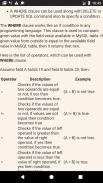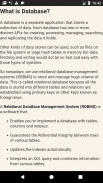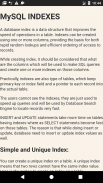









Complete MYSQL Basics
Concepts and Examples

Описание на Complete MYSQL Basics: Concepts and Examples
SQL is a database computer language designed for the retrieval and management of data in a relational database. SQL stands for Structured Query Language. This tutorial will give you a quick start to SQL. It covers most of the topics required for a basic understanding of SQL and to get a feel of how it works.
Why to Learn SQL?
SQL is Structured Query Language, which is a computer language for storing, manipulating and retrieving data stored in a relational database.
SQL is the standard language for Relational Database System. All the Relational Database Management Systems (RDMS) like MySQL, MS Access, Oracle, Sybase, Informix, Postgres and SQL Server use SQL as their standard database language.
Also, they are using different dialects, such as −
MS SQL Server using T-SQL,
Oracle using PL/SQL,
MS Access version of SQL is called JET SQL (native format) etc.
Applications of SQL
As mentioned before, SQL is one of the most widely used query language over the databases. I'm going to list few of them here:
Allows users to access data in the relational database management systems.
Allows users to describe the data.
Allows users to define the data in a database and manipulate that data.
Allows to embed within other languages using SQL modules, libraries & pre-compilers.
Allows users to create and drop databases and tables.
Allows users to create view, stored procedure, functions in a database.
Allows users to set permissions on tables, procedures and views.
Audience
This SQL tutorial is prepared for beginners to help them understand the basic as well as the advanced concepts related to SQL languages. This tutorial will give you enough understanding on the various components of SQL along with suitable examples.
Prerequisites
Before you start practicing with various types of examples given in this tutorial, I am assuming that you are already aware about what a database is, especially the RDBMS and what is a computer programming language.
Chapters-
Overview
RDBMS Concepts
Databases
Syntax
Data Types
Operators
Expressions
Create Database
Drop Database
Select Database
Create Table
Drop Table
Insert Query
Select Query
Where Clause
AND & OR Clauses
Update Query
Delete Query
Like Clause
Top Clause
Order By
Group By
Distinct Keyword
Sorting Results
Advanced SQL
Constraints
Using Joins
Unions Clause
NULL Values
Alias Syntax
Indexes
Alter Command
Truncate Table
Using Views
Having Clause
Transactions
Wildcards
Date Functions
Temporary Tables
Clone Tables
Sub Queries
Using Sequences
Handling Duplicates
Injection

























